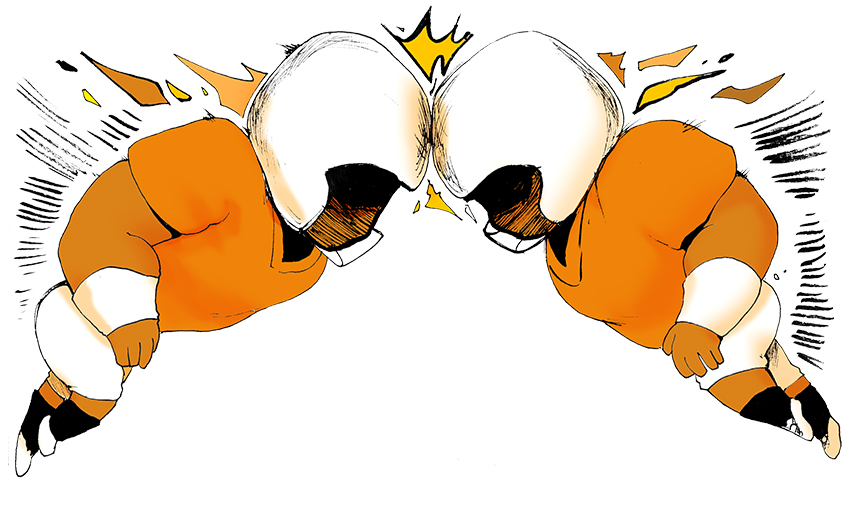UT Athletics is one of only six college athletics programs in the country to implement a new portable technology that can detect concussion signs in a player in less than a minute.
The technology, called EYE-SYNC, is the first objective concussion detection technology on the market and was picked up by the UT sports medicine staff in August, just before the start of the fall football season. The athletics department was unavailable for comment about the new technology at this time.
Before EYE-SYNC, clinicians relied on subjective reports to determine whether athletes were fit to return to play, said Scott Anderson, chief customer officer for SyncThink, the start-up company behind EYE-SYNC.
Anderson ran the Stanford University sports medicine program for a decade and used the EYE-SYNC technology with the athletics program there for two and a half years. He said the technology gathers hard data that can prove a player is unfit to return to the field, preventing further injury.
“Being able to prove hard data to clinicians and patients is really groundbreaking,” Anderson said. “The concussion space has never had an objective measure before.”
Evidence of the relationship between concussion-related brain diseases and football players has surfaced in recent years. A July study found evidence of a disease called chronic traumatic encephalopathy, or CTE, in the brains of 48 out of 53 deceased former college football players. Furthermore, 110 of the 111 brains of former NFL players showed CTE.
UT psychology professor David Schnyer has studied concussions in football players. He said they are especially susceptible to head injuries because of the nature of the sport.
“The issue with football is that the primary goal is essentially colliding with other people,” Schnyer said. “Aside from something like boxing, football is probably a game for which there’s the greatest experience of concussions.”
Iowa State University picked up the EYE-SYNC technology in July. Mark Coberley, associate athletics director for sports medicine at ISU, said the technology has proven helpful in the month they’ve had it in place.
“The fact that we can actually get some hard data to look at, that gives us a lot more peace of mind,” Coberley said. “Other (athletics programs) are just starting to use it, just starting to figure out what its capabilities are.”
The FDA-cleared technology is similar to a modified virtual reality headset with built in cameras that track eye movement, Anderson said. Data revealing concussion symptoms can be transferred to on-site clinicians within seconds via a bluetooth tablet.
“The combination of the rapid testing and the portability … there really isn’t anything like that,” Anderson said. “I believe that it’s just such a game changer.”
Schnyer said researchers have tried for years to improve safety for football players. For players to be truly safe from head injuries, the rules of the game may have to change and the equipment may need to be modified, he said.
“There are a number of (proposals) out there that are being pushed onto the sport,” Schnyer said. “Whether or not the sport accepts them is the issue.”





















